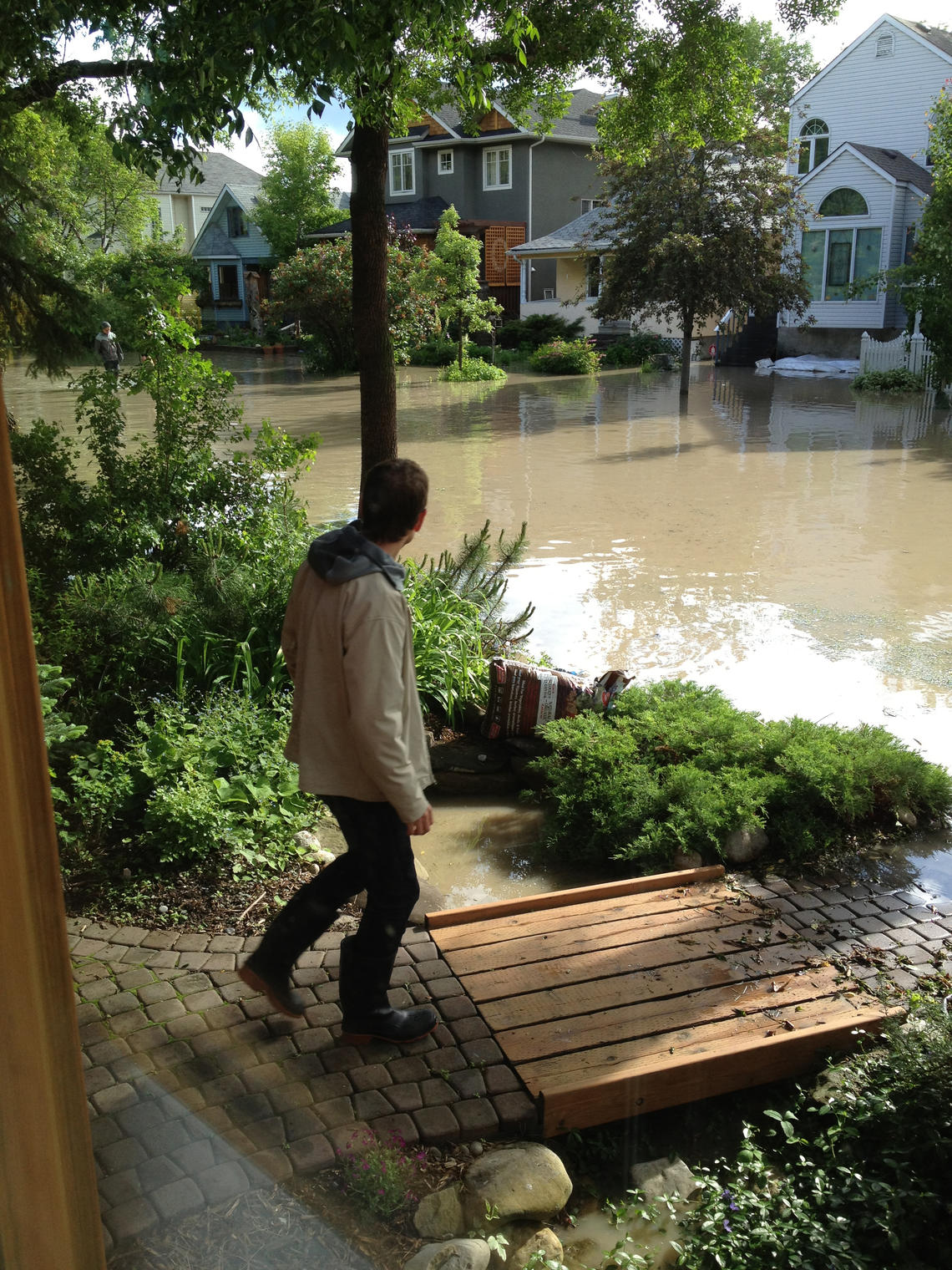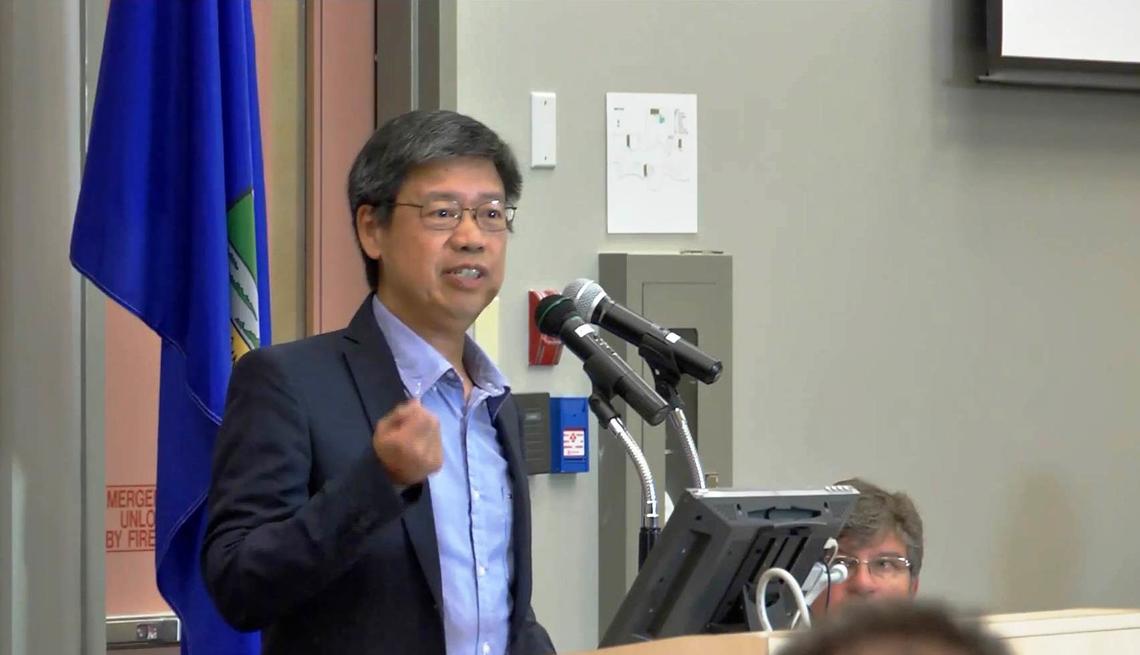June 20, 2014
Environmental Design helps channel post-flood lessons

The street in front of the Sunnyside home of Noel Keough and Linda Grandinetti after the 2013 flood.
Linda Grandinetti
Calgary’s 2013 flood is a fading memory for many people, but it’s top of mind for students, faculty and staff in the Faculty of Environmental Design as they examine ways to build safer and more resilient communities.
The work mould expert Tang G. Lee has done is one example of the Faculty’s ongoing commitment to flood resilience. As a public service in the post-flood era, Lee – a professor who conducts investigations to determine how air quality affects occupant health – tackled particularly complex mould cases for homeowners who had difficulty finding experts. Mould, he says, is everywhere in our environment but it takes water to make it grow and cause rot. Moulds also need “food” such as building materials, paper and cloth to eat, which leads to rot.
Lee was also involved with the City of Calgary’s Flood Mitigation Committee which was established after the June 2013 flood to anticipate and mitigate flood damage. The committee’s report has been completed but hasn’t yet gone to City Council.
Meanwhile, Joshua Taron, an associate professor of architecture, and architecture graduate student Ryan Cook are working to harness the energy of the materials flowing within flood waters for alternative purposes.
“By modifying existing floodplains-- and the interactions between static landscape forms and flows of materials – we are attempting to reduce the impact of floods on urban areas, and increase the aesthetics of the landscape at the same time,” says Taron.
Dean Nancy Pollock-Ellwand says, “The flood revealed our vulnerability – and also our strengths – as a community. The University was a source of needed help during that difficult time and is also a source of expertise that provides some hope as we look toward building more resilient communities.”
When the University offered employees a paid work day to help with flood recovery, Environmental Design representatives assisted High River residents living in university residences during the flood to move back home.

EVDS professor and mould expert Tang G. Lee, presenting to the Calgary Real Estate Board.
After the Floods symposium
While more than a third of the 27-member faculty and staff, as well as students, helped clean-up efforts n the community after the flood, the Faculty also formally provided its expertise in urban planning, environmental and architectural design through an international symposium called After the Floods - Making Resilient Communities under the Faculty’s makeCalgary banner that was co-organized with the Institute of Public health and the Urban Alliance, a partnership between the City of Calgary and University of Calgary.
The gathering brought together urban designers, public-health practitioners, city planners, disaster-recovery workers and city staff to help generate provocative ideas about what resilient design and planning would look like in Calgary and region. Scenarios were created in a studio by architecture students led by the New York-based Stephen Cassell who was involved in the Museum of Modern Art’s Rising Currents project that proposed a reconsideration of New York’s waterfront post-superstorm Sandy.
“This event and the work of the students reminded us that progressive communities worldwide are turning their attentions to resilient urban design and community planning,” says Pollock-Ellwand.
Helping strangers, and those close to home
Coincidentally, one beneficiary of Environmental Design and community resources during the flood was Environmental Design Professor Noel Keough, who was in Europe doing research during the flooding.
Keough’s wife Linda Grandinetti says, “At its height, we had almost six feet of water in the fully developed basement of our Sunnyside home. But even as the water was being pumped out, dozens of friends, family and complete strangers arrived to help.”
Among the volunteers were Pollock-Ellwand, EVDS professor Jim Love and his family, and many students, some of whom volunteered for more than one day. At times, more than 40 people were assisting, Grandinetti says.
“We had so much help that the entire basement -- the drywall, insulation, and all the contents -- went out the front window in 48 hours. The studs and floor were cleaned and disinfected, and we began running fans to dry the place out. All told, when we tallied volunteer hours contributed for the demolition and clean-up for our insurance claim, it was almost 500 hours.”
Grandinetti says, “We’ve never been on the receiving end of so much support, and it was really wonderful. It’s still difficult to put into words the immense gratitude we feel for everyone’s willingness to help.”
